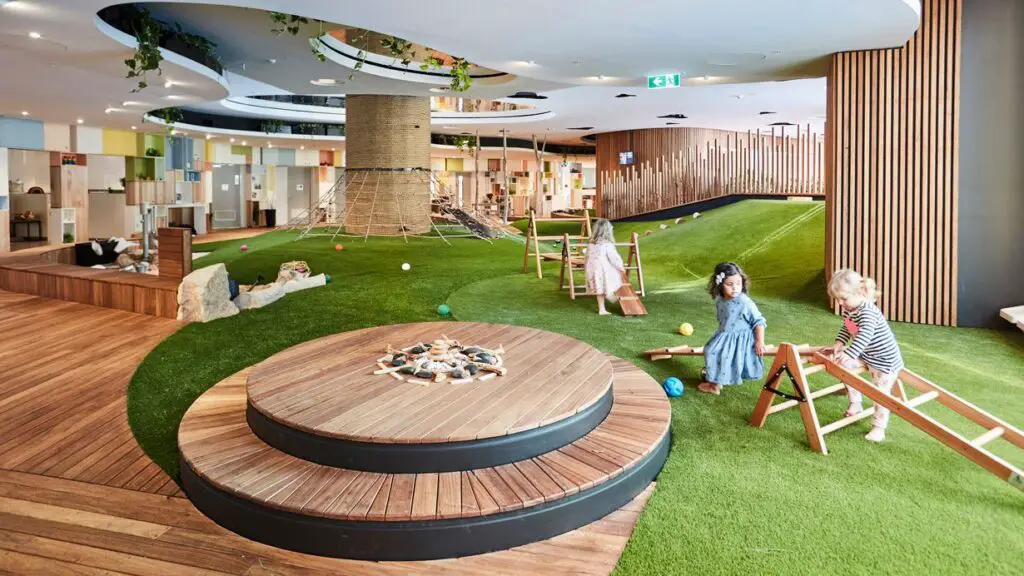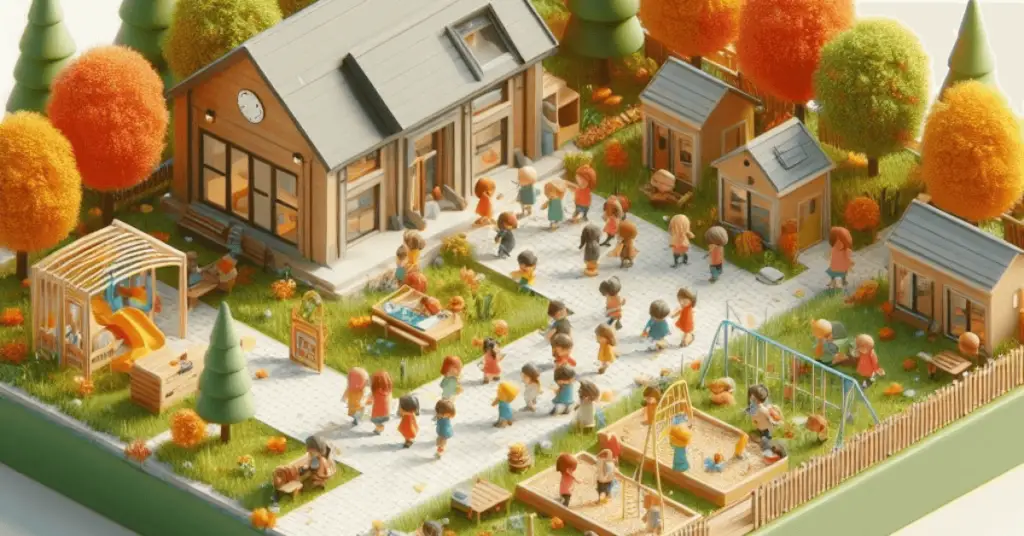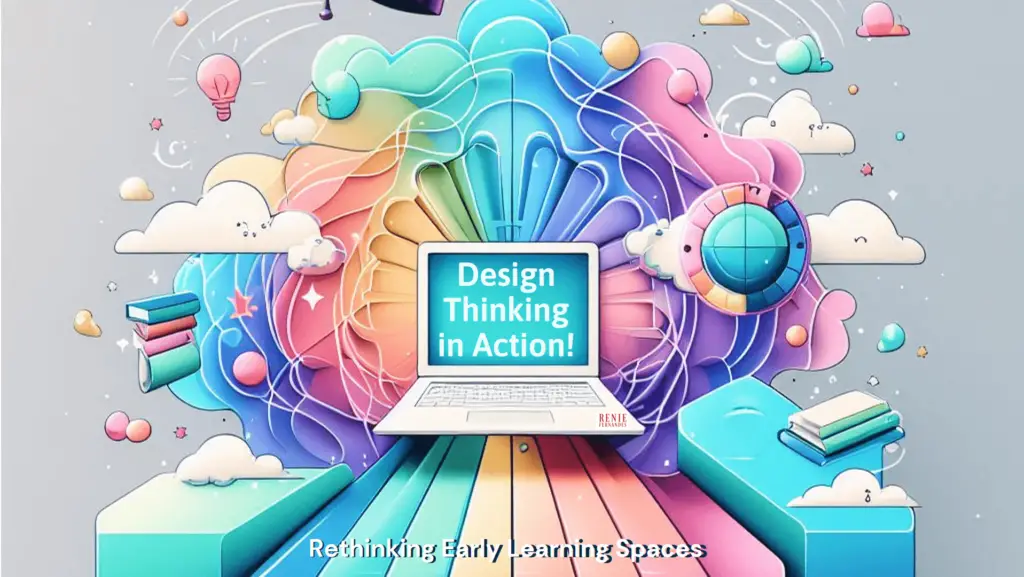Exploring Evolving Trends in Childcare Centre Designs
Within the ever-changing landscape of childcare centers, designers consistently seek innovative ways to meet the dynamic needs of children, parents, and educators. With a heightened focus on crafting engaging and inclusive learning environments, I have seen the interior design of these spaces stands as a pivotal element in shaping the day to day interactions and activities in a child’s life. In this exploration of the latest trends, we’ll navigate through the diverse facets shaping childcare center design.
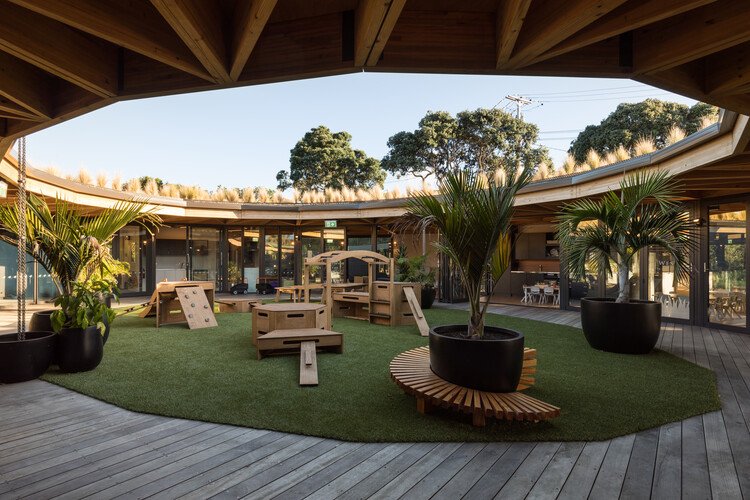
Biophilic Design: Immersing Nature Indoors
The abundant natural beauty that we see in our day to day environment can serve as a deep well of inspiration when we design the childcare centers. Today, I see a lot of designers seamlessly incorporating elements of nature into indoor spaces, popularising biophilic designs. A notable illustration of this approach is evident in the Kakapo Creek early learning center at New Zealand. The center boasts a circular design, symbolizing a gathering place, with the capacity to accommodate up to 100 children. The circular layout features four main classrooms arranged around it, mirroring the meandering stream that marks the site boundary. Through the incorporation of natural materials, indoor plants, and expansive windows within the classrooms, the space not only visually links children with their environment but also actively contributes to cultivating a tranquil and soothing atmosphere.
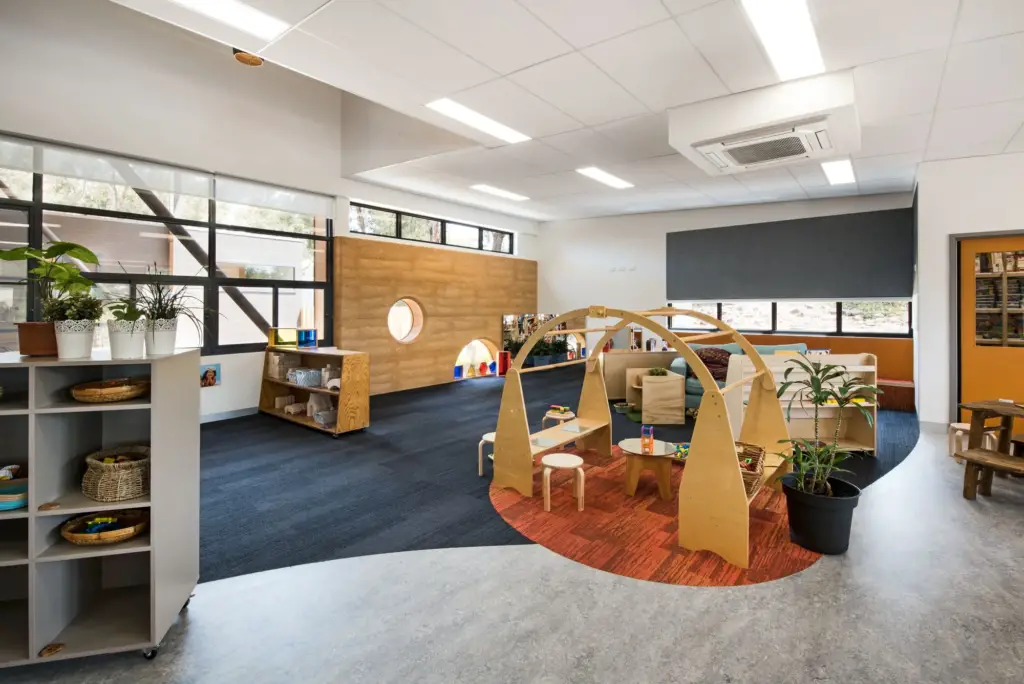
Sustainability Takes Center Stage
In my recent research, I have seen government bodies incentivising and supporting sustainability initiatives. For examples, The Highton Child and Family Centre, with its impressive six-star energy rating is a green star project by the City of Greater Geelong as a part of its new forward-thinking Sustainable Building Policy. From responsibly sourced materials for the building’s frame to surpassing Australian standards for climate adaptation, this center is a sustainability champion.
In this project, sustainability is weaved into every element. The eco-friendly materials include carpet tiles made from reclaimed fishing nets, wood-like products from pine dust and recycled plastic bottles, and linoleum crafted from linseed oil. Energy-efficient lighting, along with sustainable construction practices like using reclaimed water and recycled aggregates for concrete, further solidify the commitment to sustainability.
In essence, childcare centers are evolving into not just learning spaces but also platforms for instilling crucial lessons on sustainable living for the community’s youngest members.

Cultural Sensitivity in Design
With the global migration, every country boasts its unique cultural tapestry. I believe that integrating elements from diverse cultures into childcare center designs creates visually enriched learning spaces and fosters a profound sense of inclusivity. This mindful approach ensures that every child, regardless of their background, feels intricately connected to a broader cultural narrative. At the Regional Early Education & Development Inc (REED), a provider of early education services, the Yarning Circle was introduced. This initiative was funded by the Commonwealth Community Child Care Fund (CCCF). The yarning circle serves as a focal point for bringing children and educators together in the childcare center, allowing them to engage in discussions, share stories, and exchange ideas.
It’s remarkable to witness how Yarning Circles, rooted in the story-sharing traditions of Aboriginal and Torres Strait Islander cultures, are gaining prominence in childcare centers across Australia. This cultural practice actively contributes to cultivating a collaborative and inclusive learning environment for children from diverse backgrounds.
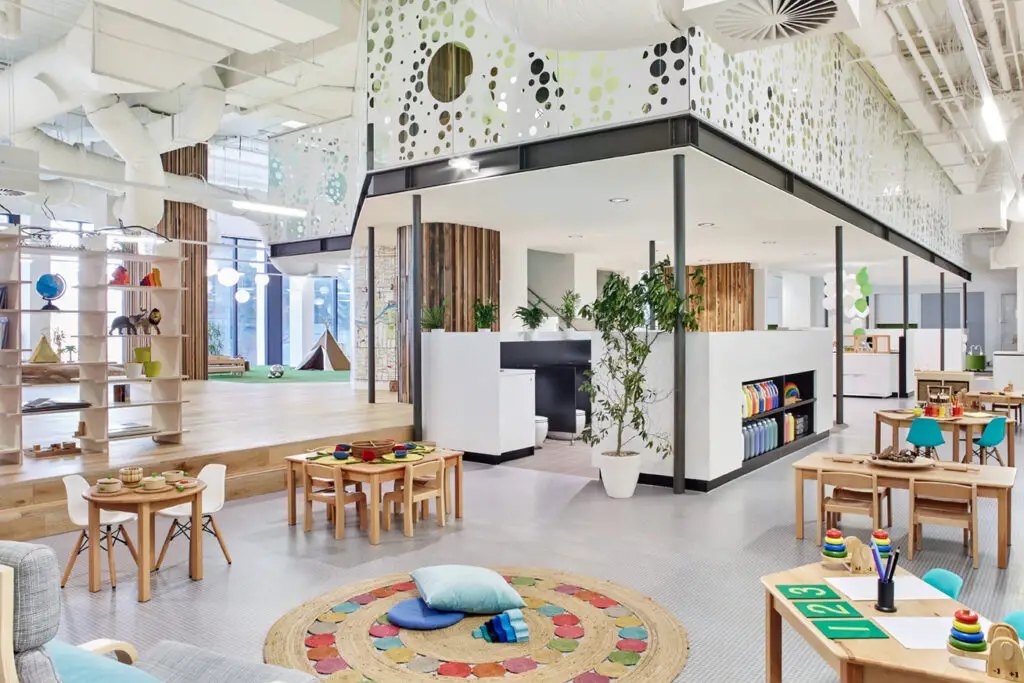
Flexibility for Varied Learning Experiences
As part of a global trend, the prevalence of flexible learning spaces is on the rise. Designers are responding by incorporating versatile furniture and movable partitions to seamlessly transition between play, learning, and rest areas. This approach enhances overall functionality. The emphasis on flexibility also entails adopting a forward-thinking approach in designs, identifying how a space can serve multiple purposes. While childcare centers operate under lease agreements, and relying on a certain number of children for viability, the traditional focus on educator-to-child ratios and regulations often overlooks the potential benefits of incorporating quality and flexibility in space planning. The Guardian Childcare South Yarra in Melbourne is a prime example of flexibility in space planning. SJB Architects used a traditional open floor plan with low-height walls, promoting a child-centered approach. The mezzanine level serves as an art area with full-height glazing, fostering unique architectural expression and providing educational perspectives.
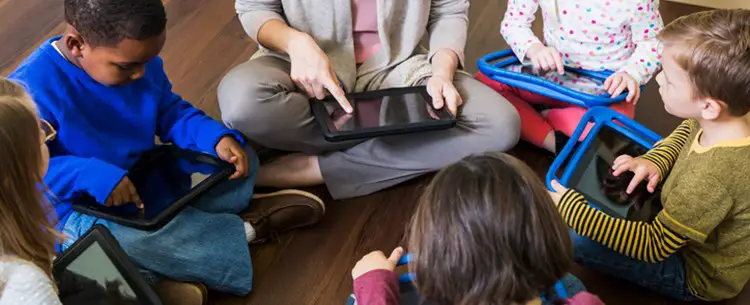
Technology Integration in Moderation
Today’s children are born into the digital era, requiring preparation for the technological future that awaits them. Therefore, it is important for us to recognise the pivotal role of technology in education, and design this into the centre’s design. At a recent early childhood learning conference in Australia, exposure to digital technology was described as ‘essential for child development’. This underscores the careful consideration of technology integration, viewing it as a supportive tool without overshadowing fundamental developmental aspects. The strategic inclusion of smart classroom setups and age-appropriate educational tools enhances traditional learning methods rather than replacing them.
Incorporating technology into children’s development and education plans enables the creation of lessons catering to various learning styles. Visual learners can utilize smart boards or tablets for drawing and visual aids, while those favoring reading/writing can absorb information or jot down ideas using the same media. Auditory learners benefit from music streaming platforms or audiotapes, and tactile learners can engage by acting out scenes seen in videos or using interactive media on smart devices.
